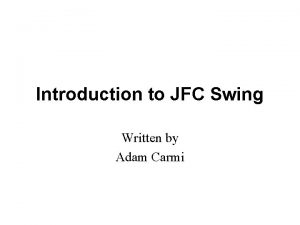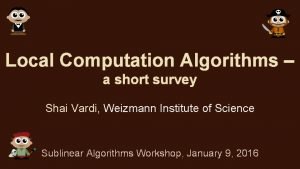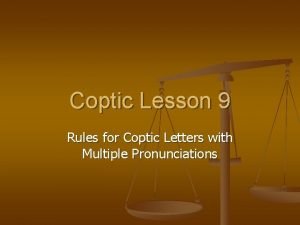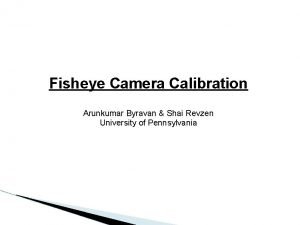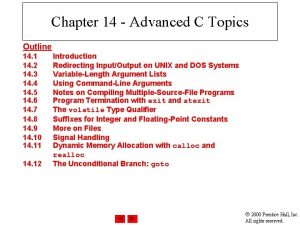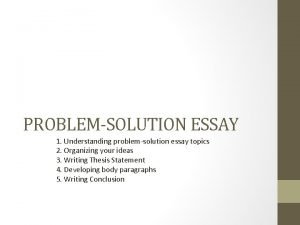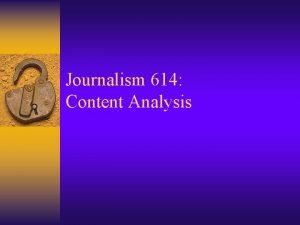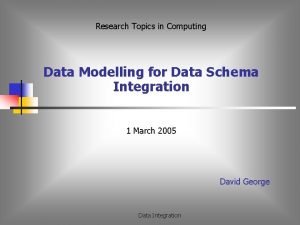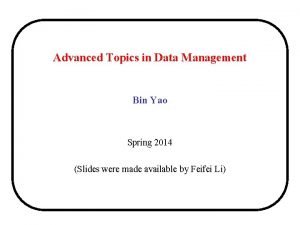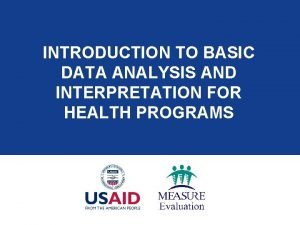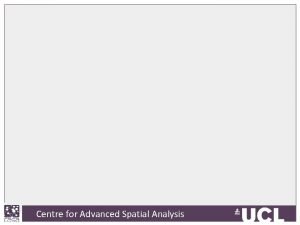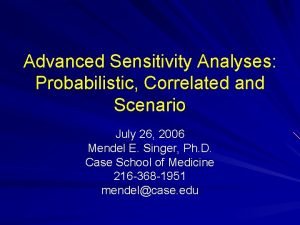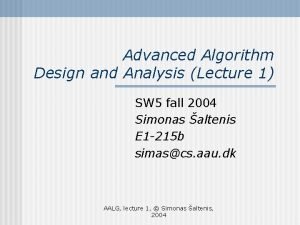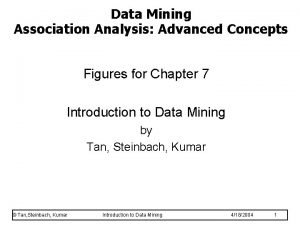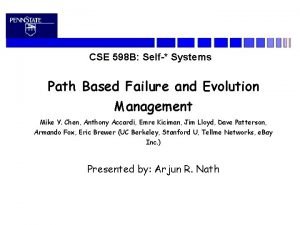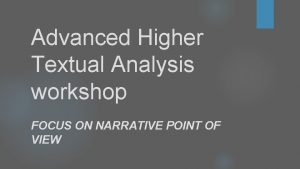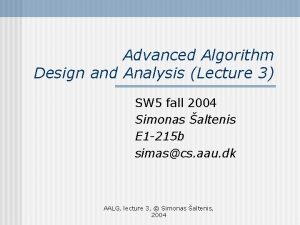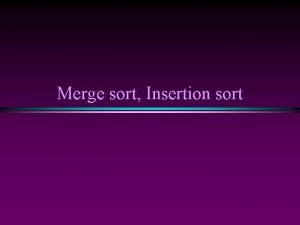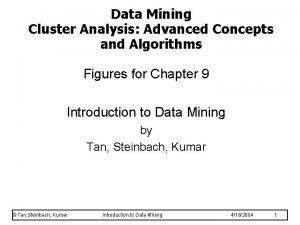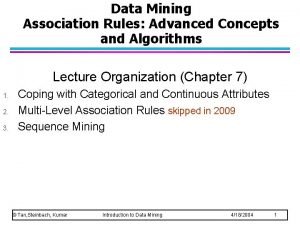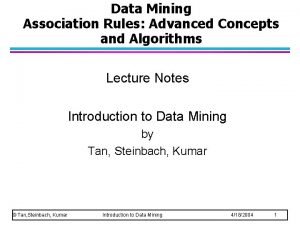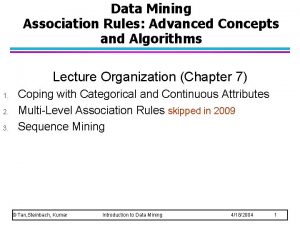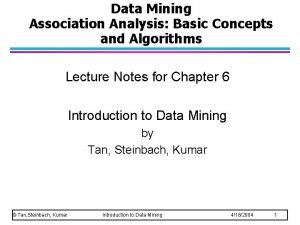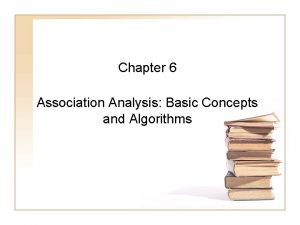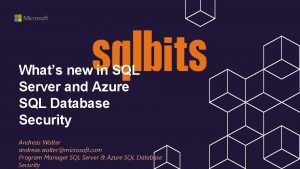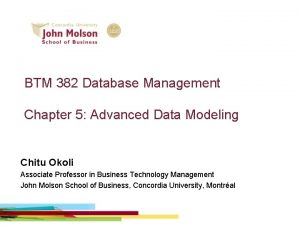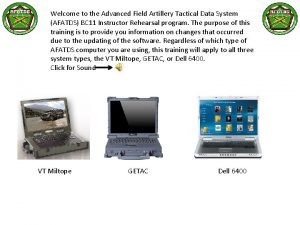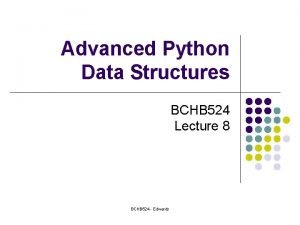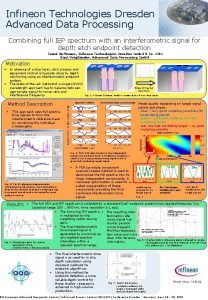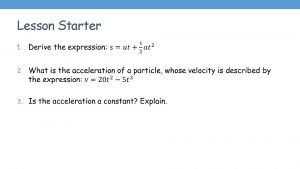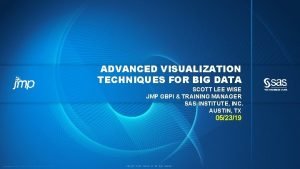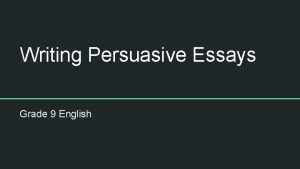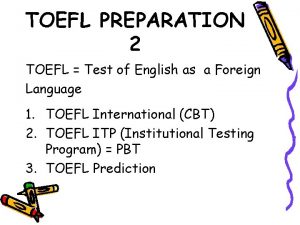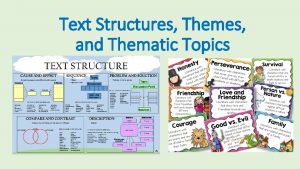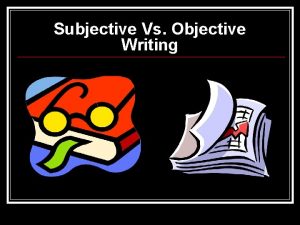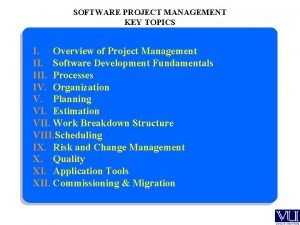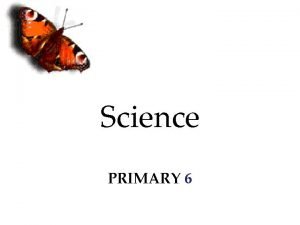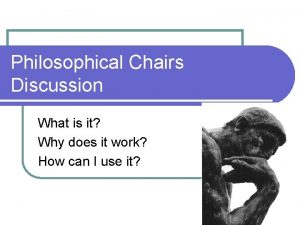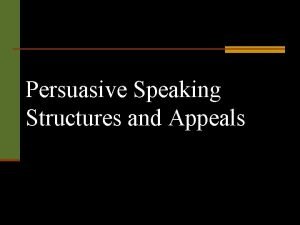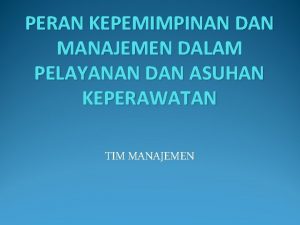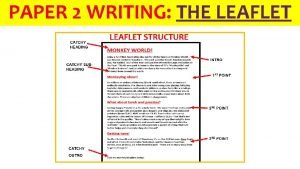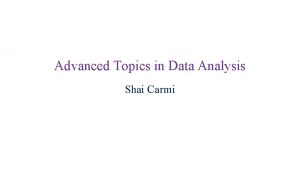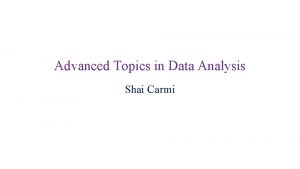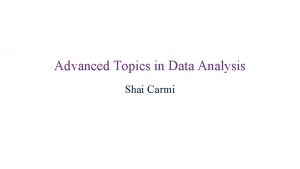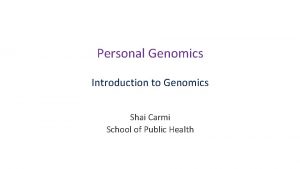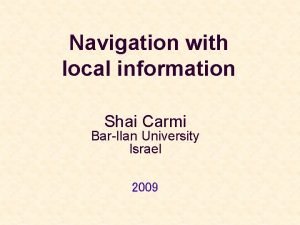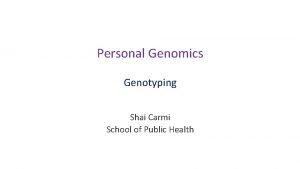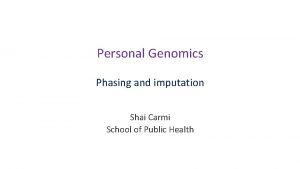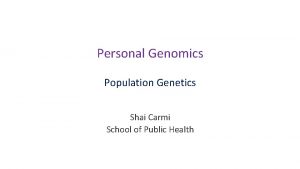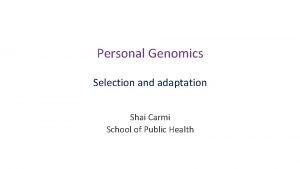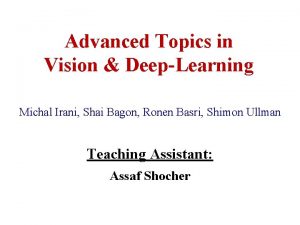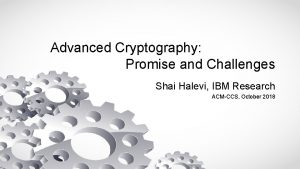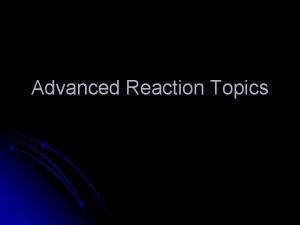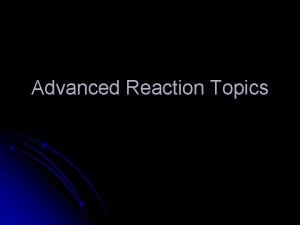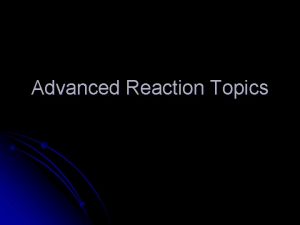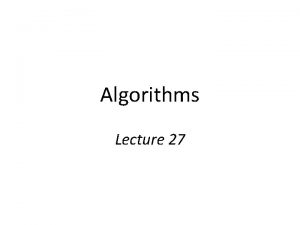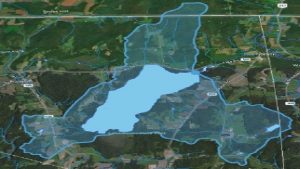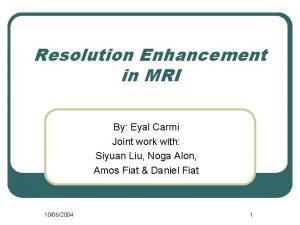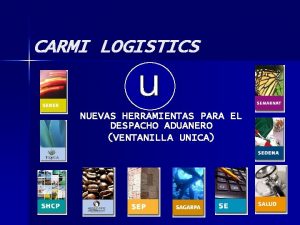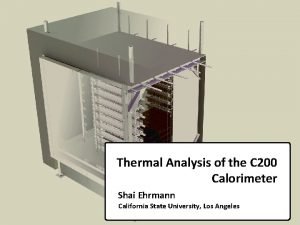Advanced Topics in Data Analysis Shai Carmi Introduction











































































- Slides: 75

Advanced Topics in Data Analysis Shai Carmi

Introduction to machine learning • Basic concepts o o o o Definitions and examples Regression Overfitting Bias-variance tradeoff Classifiers Cross validation Discussion

Bibliography • An Introduction to Statistical Learning: with Applications in R o o o Gareth James, Daniela Witten, Trevor Hastie, and Robert Tibshirani Springer, 2013 PDF available online (http: //www-bcf. usc. edu/~gareth/ISL/) • Learning From Data o o Yaser S. Abu-Mostafa, Malik Magdon-Ismail, and Hsuan-Tien Lin AMLBook, 2012

Advanced reading • The Elements of Statistical Learning: Data Mining, Inference, and Prediction o o o Trevor Hastie, Robert Tibshirani, and Jerome Friedman Springer, 2009 Available online (http: //statweb. stanford. edu/~tibs/Elem. Stat. Learn/download. html) • Pattern Recognition and Machine Learning o o Christopher M. Bishop Springer, 2007

Motivation • A person arrives at the emergency room with a set of symptoms that could possibly be attributed to one of two medical conditions o o o Myocardial infarction vs heartburn Bacterial vs viral infection Overdose from one of two possible drugs • The person undergoes multiple tests o E. g. , blood pressure, temperature, physical examination, X-ray, urine test, biopsy • We also have clinical and demographic information: o E. g. , medical background, sex, age, occupation, address, family history • How to diagnose?

Motivation • Current method of diagnosis could be: o o o Call an expert physician to interpret the results Perform a decisive but expensive or lengthy additional test Look in papers and books to understand the underlying biology • But we would like to save time, money, and personnel and improve accuracy • We have data: information on thousands of previous patients o o We have their test results + clinical and demographic information We also saved their previous ground truth diagnosis • Can we use the data to diagnose a new incoming patient?

A revolution in medicine

Basic definitions

What does machine learning do? •

Supervised learning: Classification learning Sick Healthy ? ? Temperature • A machine learning classifier divides the space into the different classes • We can then assign a label to each new point • The classifier we learned is called our “model” ? Class separation line ? Blood pressure ?

Classification examples • Data points: o o o • What are the features of each data point? • What is the dimension? • What is the typical sample size? Blood counts Genome sequence Monitor recordings MRI photos Heart rate and blood pressure recordings Electronic medical records, lifestyle or demographic parameters • Labels: o o o Typically, risk to develop a disease over a given period (“clinical outcome”) Precise (=expert) diagnosis (e. g. , radiologists, pathologists) Success of treatment/complications Side effects of drugs or procedures Health-related behavior

Complex models learning • More “complex” (“flexible”) models than a straight line are often needed • Complex models can improve accuracy, but … o Are more difficult to interpret o May end up leading to lower accuracy

Learning a classifier learning • What does learning mean? o We select the method (or algorithm, or type) of classifier (e. g. , divide the space using a straight line) o Find the parameters of the classifier (e. g. , slope and intercept for a line) that classify the training set with the highest accuracy

How to determine whether a mutation is pathogenic? • Many mutations are discovered in the genomes of patients • Which of them is pathogenic? Which is benign? • Each mutation is characterized by many features: o Substitution or deletion, intergenic or genic, distance to coding sequence or splice site, impact on protein, gene expression in each tissue, epigenetics (methylation, chromatic modification, transcription factor binding, etc. ), evolutionary conservation, polymorphism in the population • For a small training set, mutations were heavily investigated and labeled as pathogenic/benign • A classification algorithm learns the connections between features and pathogenicity • We can now predict which of the new mutations is pathogenic

Drug discovery • Which one of millions of small molecules binds to a target (e. g. , a protein)? • Each molecule in the database is encoded by a large number of chemical and physical properties (features) • For a small training set, actual (expensive) experiments were performed to label them as binders/non-binders • A classification algorithm learns the connections between features and binding ability • We can now predict which of the other molecules in the database can bind • Other papers have attempted to predict side effects, etc. Can we distinguish sweet and bitter molecules? https: //www. biorxiv. org/content/early/2018/09/27/426692

Predicting the glycemic response • The “damage” of a meal is approximated by the total rise in glucose levels • How to personalize food recommendations that will minimize the glycemic response? • Each individual is characterized by several features • For a small training set, the glycemic response (output) was measured • A regression algorithm was applied to learn the connections between the features and the response, and predict the response for new meals

Introduction to machine learning • Basic concepts o o o o Definitions and examples Regression Overfitting Bias-variance tradeoff Classifiers Cross validation Discussion

Supervised learning: regression • Sales?

Simple linear regression • Predicted sales Sales?

Non-linear regression • Predicted income Income?

How do we learn? •

Reminder: straight lines •

Learning simple linear regression • Errors

Multiple linear regression of ior ars ed uc Se n Ye ity Incom e • ati on

Non-linear regression •

Introduction to machine learning • Basic concepts o o o o Definitions and examples Regression Overfitting Bias-variance tradeoff Classifiers Cross validation Discussion

“Cheating” •

“Cheating” •

“Cheating” • Very large MSE=0!

Did we correctly inferred the true function? • Very large MSE=0!

Overfitting • A machine learning algorithm learns to minimize the error in the training set • But we really care about the error in a test set, an independent set of data points, for which the label is unknown to the learning algorithm • The test set represents the realistic performance • A method that works very well on the training set but poorly on the test set is overfitting

Overfitting • When using models that are too complex, we are effectively fitting the “noise” in the data • Therefore, the resulting models do not generalize well to future data sets Good fit Overfitting

Underfitting • Is it better to have very simple models? • Models too simple do not capture the structure of the true function, and do not perform well even on the training data • Called underfitting

Overfitting and underfitting Underfitting • Is it better to have very simple models? • Very simple models do not capture the structure of the true function, and perform poorly even on the training data • Called underfitting Good fit Overfitting

Overfitting We Prediction error (e. g. , MSE) Test error We want to be here Training error Good fit Low Model complexity/flexibility High

Introduction to machine learning • Basic concepts o o o o Definitions and examples Regression Overfitting Bias-variance tradeoff Classifiers Cross validation Discussion

What are the sources of error? • test error

A simple experiment • Learning the best horizontal line Learning the best straight line Test error

What happens if we use a different training set? • We assume that training sets are drawn randomly • Each different training set will lead to a different regression line • The models differ on their test errors Test error

All possible training sets • The models differ on how far they are on average from the truth • They also differ on how much the difference (from the truth) varies across training sets Red line: The mean of all possible training sets The average prediction is far from the truth Not much variation across training sets Grey area: The variance of the prediction across training sets The average prediction is close to the truth Highly variable across training sets

The bias-variance decomposition •

Bias and variance in linear regression Bias: distance from the average of the prediction over all training sets Variance: the extent to which the prediction varies across training sets

Bias and variance Large bias, small variance Small bias, large variance Large bias, large variance Small bias, small variance

The bias-variance decomposition: explanation •

The bias-variance tradeoff • Simple models: high bias, low variance High bias Low variance • Complex models: low bias, high variance Low bias High variance

The bias-variance tradeoff Bias: distance from the average of the prediction over all training sets Variance: the extent to which the prediction varies across training sets Simple model High bias Low variance Complex model Low bias High variance

The bias-variance tradeoff • Both bias and variance contribute to the error • We need to find the complexity that has the minimal sum of bias and variance

The bias-variance tradeoff Low bias High variance Prediction error High bias Low variance Test error We want to be here Training error Good fit Low Model complexity/flexibility High

How to reduce error • Complex model Simple model Error Test error Training error Bias Variance Test error Training error

Increasing the sample size • Adding data reduced the variance of the more complex model • The complex model has a lower bias and thus the total test error is overall lower Bias = 0. 5 Var = 0. 25 Bias = 0. 21 Var = 1. 69 Bias = 0. 5 Var = 0. 1 Bias = 0. 21 Var = 0. 21 Test error = 0. 75 Test error = 1. 90 Test error = 0. 6 Test error = 0. 42

Introduction to machine learning • Basic concepts o o o o Definitions and examples Regression Overfitting Bias-variance tradeoff Classifiers Cross validation Discussion



Performance • Best theoretically possible classifier KNN

Underfitting and overfitting 100 -NN Simple model: Underfitting Best theoretically possible classifier 1 -NN Low bias High variance Complex model: Overfitting High bias Low variance

KNN training and test error We want to be here High bias Low variance Low bias High variance 100 -NN 1 -NN Model complexity/flexibility

Introduction to machine learning • Basic concepts o o o o Definitions and examples Regression Overfitting Bias-variance tradeoff Classifiers Cross validation Discussion

How to find the optimum? •

Problem • Typically, we don’t have separate training and test sets • We usually have just training data

Solution •

Problem • If we split the training data, we reduce the sample size available for training • The accuracy of classification/regression is lower for smaller samples Simple model Complex model Test error Training error

Solution: cross validation •

Typical workflow •

Typical workflow •

Cross validation error vs training error The cross validation error is a good approximation to the true test error Optimum Overfitting Underfitting

Variants •

Example: leave-one-out CV

Advantages of cross-validation • Largely removes the risk of overfitting o • • • Assuming that the training data points are independent and representative Does not eliminate parts of the training set The test error estimate is stable Applies very generally Easy to compute Fast (for 5 -fold or 10 -fold validation) Allows comparison between methods • Standard practice in machine learning

Model choice • It is usually a good practice to use simpler models, unless the more complex models provide a substantial increase in accuracy (in CV) • “Occam’s razor” • If not using cross validation, use prior knowledge to limit the model complexity

Introduction to machine learning • Basic concepts o o o o Definitions and examples Regression Overfitting Bias-variance tradeoff Classifiers Cross validation Discussion

Alternatives to machine learning • We started with an example o o A patient enters the ER, we have information from clinical and lab tests How to use data from previous patients to diagnose the new patient? • Tailored estimation methods, based on problem-specific probabilistic models o o Maximum likelihood estimation Bayesian models • “Expert systems”, which encode a set of pre-determined rules to be applied o o Essentially standard medical practice Used sometimes for games (e. g. , chess)

The machine learning approach • Learning from the data, not from rules o • • • Rules may be unknown or inaccurate! A set of standardized tools that can be applied to any problem in any domain Easily applicable implementations available for numerous methods Users only need to define features and collect a training set Informative on the important features Very powerful in practice • Methods are often “black-box”, no intuitive interpretation • Domain-specific knowledge can often help • Cannot fix poor-quality data

Why review different methods? • Many methods exist for learning • There is no single method that’s “best” • Important to understand how methods work and what are their advantages and disadvantages in different settings

The curse of dimensionality • With more features (=data in higher dimension), we have more information on each data point, and hence should be able to better classify it • But in practice, only up to a point • Too many features can be “confusing”, leading to overfitting and worse performance

Why? • The higher the dimension, the more spread apart the data points are in space • All distances become very large • The concept of “nearest neighbors” becomes meaningless • What to do? o o o Do not add features that are probably not informative or redundant Reduce the dimension of the data (PCA) Use simpler models (as they require less parameters as the dimension grows)
 Habere non haberi
Habere non haberi Adam carmi
Adam carmi Advanced topics in software analysis and testing
Advanced topics in software analysis and testing Shai vardi
Shai vardi Coptic alphabet shai
Coptic alphabet shai Homomorphic encryption
Homomorphic encryption Robert ho shai lai
Robert ho shai lai Arunkumar byravan
Arunkumar byravan Angular advanced topics
Angular advanced topics Advanced topics in angular
Advanced topics in angular Advanced c topics
Advanced c topics Advanced topics in web development
Advanced topics in web development Android advanced topics
Android advanced topics Advanced topics in computer science
Advanced topics in computer science Strong thesis statement
Strong thesis statement Simple content analysis
Simple content analysis Discourse analysis topics
Discourse analysis topics Data warehouse research topics
Data warehouse research topics Bin yao
Bin yao Advanced higher english dissertation introduction examples
Advanced higher english dissertation introduction examples Nnrims
Nnrims Introduction to data warehouse
Introduction to data warehouse Understanding standards advanced higher art
Understanding standards advanced higher art Memory forensics training
Memory forensics training Centre for advanced spatial analysis
Centre for advanced spatial analysis Advanced sensitivity analysis
Advanced sensitivity analysis Advanced algorithm design
Advanced algorithm design Association analysis advanced concepts
Association analysis advanced concepts Cse 598 advanced software analysis and design
Cse 598 advanced software analysis and design Advanced higher textual analysis
Advanced higher textual analysis Advanced algorithm analysis
Advanced algorithm analysis Insertion sort advanced analysis
Insertion sort advanced analysis Chapter 9 kumar steinbach tan
Chapter 9 kumar steinbach tan Association analysis advanced concepts
Association analysis advanced concepts Association analysis advanced concepts
Association analysis advanced concepts Association analysis advanced concepts
Association analysis advanced concepts Association rules in data mining
Association rules in data mining Compact representation of frequent itemsets
Compact representation of frequent itemsets Azure secure enclave
Azure secure enclave Advanced data structures in java
Advanced data structures in java Btm 382
Btm 382 Advanced field artillery tactical data system
Advanced field artillery tactical data system Advanced data structures in python
Advanced data structures in python Advanced data processing
Advanced data processing Advanced higher physics notes
Advanced higher physics notes Advanced data visualization techniques
Advanced data visualization techniques Data quality is always a concern with secondary data
Data quality is always a concern with secondary data Define data collection method
Define data collection method Data preparation and basic data analysis
Data preparation and basic data analysis Data acquisition and data analysis
Data acquisition and data analysis Body paragraph
Body paragraph School magazine article sample
School magazine article sample Persuasive text examples year 9
Persuasive text examples year 9 What is a thematic essay
What is a thematic essay Behavioural training topics
Behavioural training topics Skill 24 anticipate the questions
Skill 24 anticipate the questions Purpose of interview
Purpose of interview Surprising reversal strategy
Surprising reversal strategy Dissatisfaction theme in the great gatsby
Dissatisfaction theme in the great gatsby What is a thematic topic
What is a thematic topic Toastmaster table topics questions
Toastmaster table topics questions Subjective vs objective writing
Subjective vs objective writing Solo talk examples
Solo talk examples Software project management topics
Software project management topics Sociolinguistics topics
Sociolinguistics topics Smaw welding lesson plans
Smaw welding lesson plans Pertanyaan untuk pemateri seminar
Pertanyaan untuk pemateri seminar Tema seminar pemuda kristen
Tema seminar pemuda kristen Primary 3 science syllabus
Primary 3 science syllabus Customer service topics for discussion
Customer service topics for discussion Philosophical chairs questions
Philosophical chairs questions Persuasive speech problem solution
Persuasive speech problem solution Leadership management topics
Leadership management topics Leaflet writting
Leaflet writting In an outline the relationship of topics
In an outline the relationship of topics An opinion paragraph
An opinion paragraph

